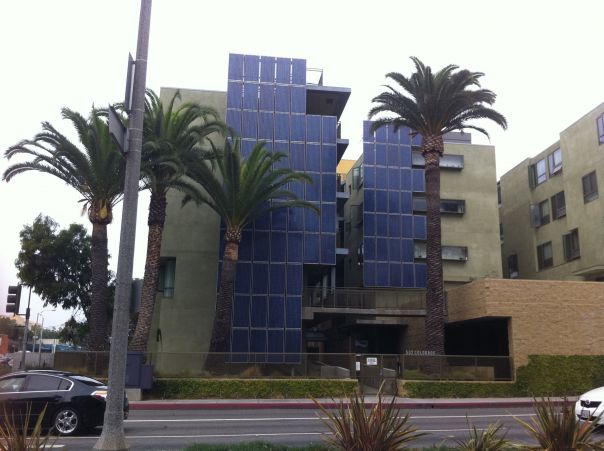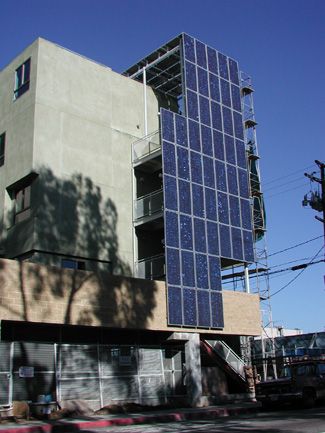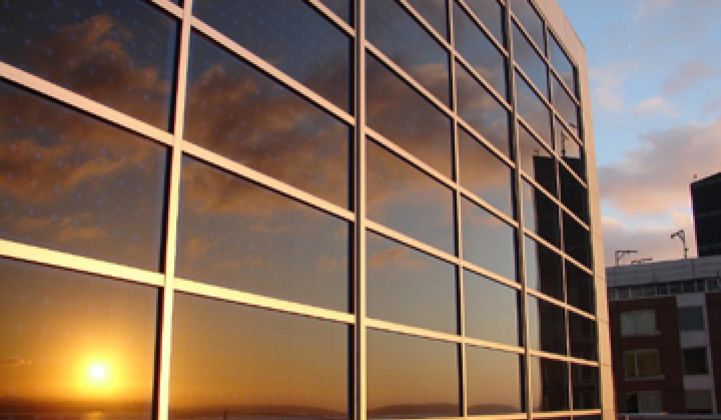Building-integrated photovoltaics (BIPV) is a polarizing subject.
The idea of solar on a west-facing vertical wall might seem less than efficient, and it's certainly not optimal, but this study from altPower indicates the energy and carbon benefits associated with that type of orientation. AltPower has done some of the more interesting BIPV designs in the U.S.
So it might be safe to say that there's good BIPV and not-so-good BIPV. And the BIPV at 502 Colorado Ave, Santa Monica, California is not so good. At least not with the pair of palm trees located in front of the panels. (See the picture below.) Tor Valenza a.k.a. "Solar Fred" brought this one to our attention.
The vast majority of solar installers are hard-working, honest, green-hearted individuals who want to spread the good word about solar power. We feature their fine work every week in Greentech Media's solar coverage.
And the structure in question is an ambitiously green build. So despite its questionable solar energy production -- it's still a noble and positive effort.
The building -- an affordable housing development called Colorado Court -- was meant to be a demonstration building of sustainable energy supply and meant to be 100 percent energy independent. There is an astonishingly long list of design considerations that went into this building, including:
- Passive solar design strategies
- Locating and orienting the building to control solar cooling loads
- Shaping and orienting the building for exposure to prevailing winds
- Shaping the building to induce buoyancy for natural ventilation
- Designing windows to maximize daylighting
- Shading south facing windows and minimizing west-facing glazing
- Designing windows to maximize natural ventilation
- Shaping and planning the interior to enhance daylight and natural air flow distribution.
- Natural gas powered turbine/heat recovery system that will generate the base electrical load and hot water demands for the building
- Indoor and outdoor motion sensors for lighting
- R-21 insulation throughout the building (recycled blown-in cellulose in 2x6 framing, R-30 insulation in the roof
- Integration of the water heating, space heating, and cogeneration waste heat systems
- Compact, energy-efficient, non-CFC refrigerators
- Permeable gravel alley and underground stormwater retention system will retain 95% of the site’s stormwater runoff (and 100% of the entire block’s alley runoff) to allow its gradual absorption into the groundwater
These are great ideas, some of which were challenging to implement in this project.
But what is with those trees?
The project energy engineer is Dr. John G. Ingersoll of Helios International; he has not yet responded to our inquiries.

This looks to be the building during construction. Picture from the City of Santa Monica Office of Sustainability and Environment website.




